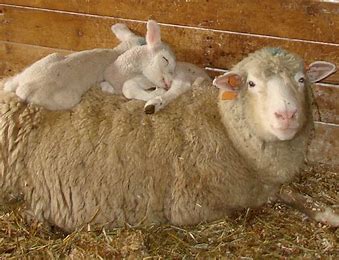

Knowledge of animals’ natural behavior is essential in ensuring we create an environment, manage and care for individual animals and flocks in a manner that enables them to express themselves naturally and to remain healthy with a high quality of life. The behavior of sheep is likely to be a complex interaction between their genetics and the fundamentally important early life experiences with their dam, further complicated by their association with their peers, particularly around weaning, and the quality and availability of grazing.
Maternal behavior is key to ensuring survival of lambs, particularly when an ewe has two or more offspring. Newborn lambs need milk and immunological protection shortly after birth, and early interactions between the mother and the young are critical in this respect. Bonding, and consequently survival, of twins can be considerably improved if the ewe remains at the birth site for a minimum of 6 hours, and this can be encouraged in part through feeding management.
Important things to note about new born lambs
Lambs that are quick to stand and suck after birth have better survival than lambs that are slow to get up and suck.
Lamb behaviors are influenced by lamb genetics – breed, selection line within breed and sire of the lamb all affected early lamb behaviors. Lamb behavior immediately after birth is heritable, suggesting that selection for lamb behavioral traits could improve lamb vigor at birth and increase lamb survival.
Lamb rectal temperatures are correlated with lamb behavior. Taking a lambs temperature soon after birth could provide useful information on lamb vigor.
The ewe and lamb maintain a close spatial relationship over the first week of life. After this period lambs gather into peer play groups and up to 4 weeks of age they go increasingly longer distance from their dam. Nurturing and recognition are the key components of early maternal care, and the ewe expresses these through immediate licking and grooming behavior, which enables her to learn the smell of her offspring.
As well as recognizing their mothers’ voice, lambs also visually recognize breeds and are attracted by the sight of the same breed in the absence of their mother. There are significant breed differences in grazing, activity and social interactions. Maternal influence plays an important role in shaping the behavior of their offspring as they develop, although this is not evident immediately after birth, where breed differences are most evident with regard to sucking and early vigor and play behavior.
Social grouping, associations and activity patterns in sheep are influenced by breed although it is not clear whether these are entirely genetic differences or differences associated with learning and adaptation resulting from different environmental and social experiences, especially during early life.
 Contact Jaguza Support
Contact Jaguza Support